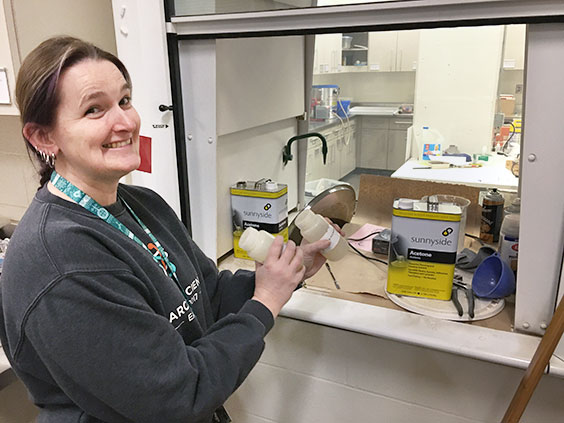State Historic Site Spotlight: Cannonball Stage Station
The State Historical Society of North Dakota owns and preserves 57 state historic sites. Some are well-known staffed sites with buildings and interpreters, while others are lesser known remote sites. For many people, the Cannonball Stage Station probably falls into the latter category. Located about 15 miles southeast of Carson or 18 miles southwest of Raleigh in Grant County, the site is situated off 53rd Avenue SW and is bound by the Cannonball River and plowed farmland. During summer 2019, two new historic interpretive panels were added to the site.
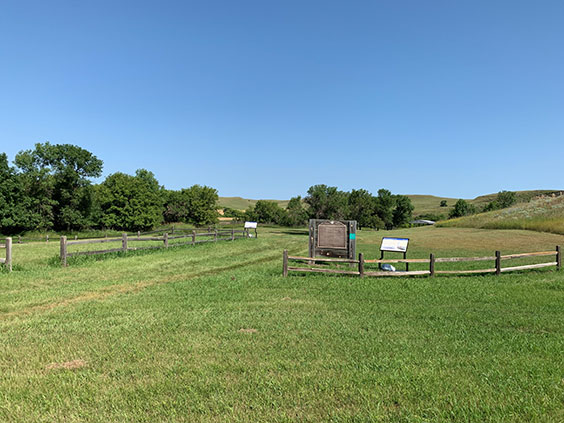
This site overview displays the wooden sign erected by the State Historical Society in 1974 and the two new interpretive signs added in August 2019.
Historic features at the site consist of three depressions marking buildings from the Cannonball Stage Station while it was in operation from 1877 to 1880.
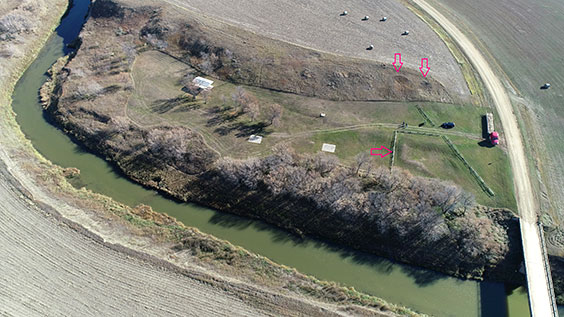
Still photo from drone footage taken in October 2018 by Research Archaeologist Timothy Reed. Historic features are identified with arrows.
The arrows at the top mark two dugouts believed to be from a log building and another unknown structure. The arrow at the bottom identifies the rectangular outline of the barn. Modern features include a sheltered picnic area. After gold was confirmed in the Black Hills by Lt. Col. George Armstrong Custer’s Army Expedition of 1874 and a treaty opened the area to Euro-Americans, a road was desired to move people and supplies to the area. Bismarck was a favored rail end, and the Bismarck to Deadwood Stage Trail was established to move people, mail, and freight to the Black Hills.
The Northwestern Express, Stage, and Transportation Company and several other independent freighters began operating out of Bismarck in 1877. On average, the journey to Deadwood lasted around 40 hours and encompassed 200 miles. Stages ran from weekly, to biweekly, to triweekly, and eventually daily. The fare was around $23.
The Cannonball Stage Station was the fifth stop along the Bismarck to Deadwood Trail. Several stations on the trail were equipped to be overnight stops and provided meals, but most stations were just places for stage drivers to get a fresh team of horses and for passengers to stretch their legs. The Cannonball Stage Station was presumably one of the latter. While stage stations were typically crude structures, they offered respite for weary travelers and a break from the weather, close quarters, and other elements faced on the journey.
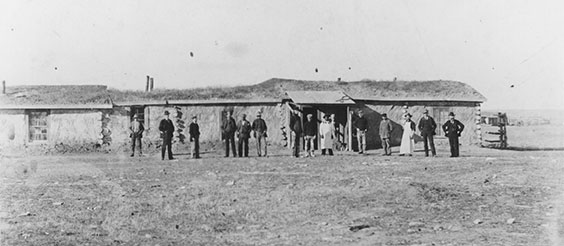
The Weller stage stop, located in McLean County, Dakota Territory, ca. 1883–89, is an example of a standard stage station at the time. As it was bad etiquette to rest your head on another passenger, travelers had to sleep upright in the passenger coaches. While most stage stations offered only a dirt floor to rest on, breaks were presumably a welcome interruption in travel, regardless of amenities. SHSND SA A4193-00001
Passenger coaches on the Bismarck-Deadwood Stage Trail were most often Concord coaches, usually drawn by four horses, or sometimes six for rough terrain. The coaches were constructed for rough travel and built to endure strain. Travel on the Bismarck-Deadwood Stage Trail was generally safe. Dangers included weather, prairie fire, and stage robbery. Outriders and shotgun messengers were employed to ward off “road agents” (bandits) from attacking the stage line after a string of holdups during the summer of 1877. Outriders rode in front and behind the wagon. Shotgun messengers rode beside the driver and were well armed. The term “riding shotgun” was derived from shotgun messengers.
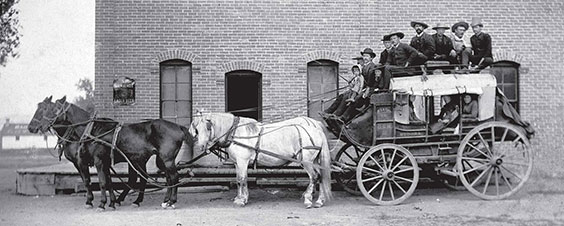
A driver sat at the front of the wagon with his legs braced on the “dashboard.” Mail and light baggage were usually carried on top and held in place by an iron roof rail and ropes. Heavier baggage was usually carried on the rear. Some passengers, at their own risk, rode on top of the coach. Historian Harold E. Briggs records passengers describing a trip on a stagecoach as “not unlike the swell of the ocean.” SHSND SA 0097-46
The Bismarck-Deadwood operated commercially until 1880. The trail and the Cannonball Stage Station were abandoned when railroad expansion reached Pierre. Ruts from the wagon trains can still be seen in some places, including at the Bismarck-Deadwood Stage Trail Historic Marker site east of Flasher. For another view of the Cannonball Stage Station site, check out Timothy Reed’s past blog that includes drone footage filmed in October 2018.


